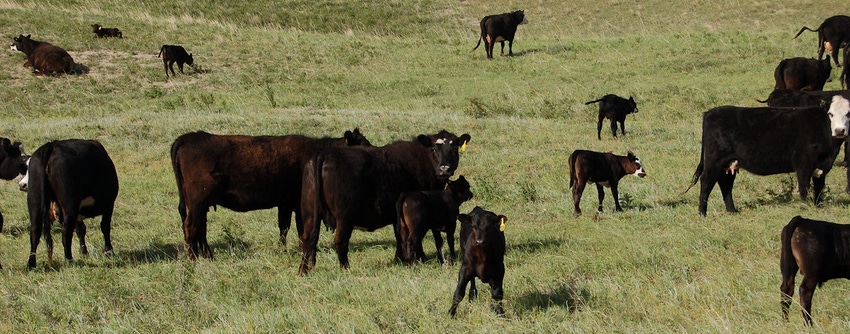April 16, 2015

Leaving beef cattle to snack on feed reserves a bit longer this spring, rather than turning them out on newly green pastures may be the way to go, a South Dakota State University professor says.
Related: 4 Tips For Late Spring and Early Summer Pasture Management
On the question of when to turn beef cattle out on spring pastures, professor Pat Johnson says the considerations include hay reserves, the cost of purchasing additional feed, and the impact of early grazing on pasture grasses.
Some questions to ask include:
How long should you continue to feed stored forages, to delay the impact of grazing on pastures?
How early can you turn out, relieving the cost of feeding?
Which pasture do you graze first?
The answer to these questions is: It depends! Beef producers may have several options, depending on pasture resources, stored feed resources, and ability to be flexible in grazing options.
Continue feeding livestock a few weeks longer
If feed reserves are available, feeding livestock a little later into spring provides pasture grasses with time to shift from dependency on reserves to utilizing photosynthesis for energy. If grazing is initiated too early, production for the balance of the growing season can be reduced, Johnson said.
Graze tame grass pastures earliest
Access to pastures planted with introduced cool-season grasses, such as crested wheatgrass and smooth brome, provides early season flexibility and avoids early grazing on native pastures which may compromise production later in the season, Johnson said. These pastures are typically ready to be grazed two or more weeks before native pastures.
Flash grazing winter pastures
A recent study demonstrated that native winter pastures could be grazed in mid-May at about 25% relative use without a decrease in stockpiled winter forage. Exceeding 25% use or extending grazing into mid-June, however, could reduce forage in those pastures that's needed for next winter.
Wait to graze native pastures until grass is "ready"
Research suggests that grass plants are most vulnerable to grazing before they have formed three new leaves. Knowing how many growing degree days are required to reach the three-leaf stage provides a general "rule-of-thumb" about plant development. The date that grasses reach the three-leaf stage varies considerably, so examining the important plants in your own pasture is recommended.
One way to come up with a date to begin examining your grasses is to use "growing degree days" (GDD, base 32 degrees after March 1).
Related: As grasses start greening up, make pasture fertilizer plans
GDD is calculated for each day as (Tmax + Tmin)/2 – Tbase, where Tbase is 32. GDD is then summed for all days after March 1. For introduced grasses, the three-leaf stage generally requires accumulation of about 500 GDD; many native cool-season grasses require about 1200 GDD. The calendar date when these growing conditions occur varies considerably from one location to another and from year to year.
A no-no: Same pasture, same time, twice
A "rule-of-thumb" which should be remembered at spring pasture turn-out is "never graze the same pasture at the same time of the year, two years in a row."
While many operations, of necessity, have a calving pasture which is grazed at the same time of the year, every year, most operations can vary where cows and calves begin grazing after calving is completed.
Related: Non-selective grazing builds up the land
"The management goal is to distribute defoliation pressure on desirable species to different times of the season in different years," Johnson notes. "If a pasture is grazed at the same time every year, the vigor of plant species which are most vulnerable at that season will be reduced and they may eventually be eliminated from that pasture."
This post adapted from Spring Turn-Out Dates: What Are Your Options? By Pam Johnson, SDSU iGrow
You May Also Like




